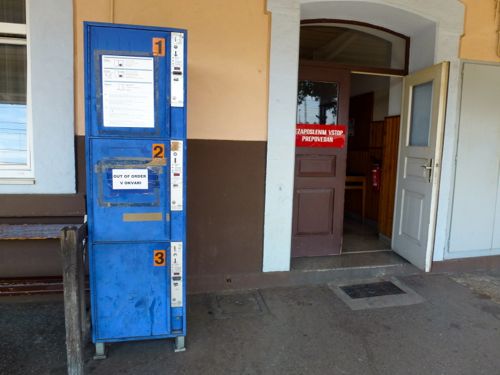As opposed to a European rail pass, it’s pretty easy to calculate whether a Japan rail pass is going to save you money:
- Decide whether you are more likely to spend 1, 2 or 3 weeks in Japan
- Plug the trips you plan to take into Hyperdia (make sure Nozomi, Private Railway and Airplane are not ticked under “Search Details”)
- Add up the total cost of these routes (note the total cost of each journey is made up of the fare + seat fee)
- Compare the grand total with the price of a rail pass for the duration of your stay
(Personally I don’t think it’s worth paying for Green (superior) class as the regular class on Japanese trains is already of a very high standard.)
If it’s a close call it’s probably still worth getting because it makes it easier to take extra day trips and some of the subway lines in major cities (e.g. the Yamanote Line in Tokyo or the Osaka Loop Line) are also covered so you’ll be able to travel on them for free.
(Note that private subway lines are not covered, but you get the bulk of your value from a JR pass by travelling on shinkansen (bullet trains) and local intercity trains.)
We bought JR passes for our recent 3 week visit to Japan and in our case it certainly saved us money:
- Number of trips taken: 20
- Average cost of short distance journey (e.g. day trip): ¥390
- Average cost of long distance journey (e.g. shinkansen/intercity): ¥12,000
- Total travel value used: ¥88,690
- Cost of pass: ¥57,700
- Money saved: ¥30,990 (approx AU$360 or £235)
This is a significant saving, but it’s still a pretty big outlay in the first place. If you want to travel on a tighter budget it might be worth looking into a long distance bus pass as a cheaper alternative. I’ve not travelled this way in Japan myself but we met a couple that were doing it and they said it was comfortable and convenient. They normally took night buses so by the time they woke up they were in their destination, killing the two birds of transport and accommodation with the same stone. (And I don’t know about you, but I certainly sleep more easily on a bus than I do on a plane.)
Tip 1: seat reservations
It’s free to make a seat reservation using a JR pass and you can do it up until minutes before you actually board the train. Sometimes the reserved cars are sold out but if this is the case you can more often than not get a seat in one of the the unreserved cars. However, sometimes the entire train is made up of reserved cars only. If you absolutely must take that train and all the seats are booked out you can try to book “standing only” tickets.
At the end of the day I do think it’s worth the extra effort to make a seat reservation as it just eliminates any uncertainty.
Tip 2: buying a pass while travelling
The biggest rule about a JR pass is that you cannot buy one in Japan. You have to buy a voucher for the pass before you arrive, then you exchange it for the actually pass at any major train station in Japan. This is all good and well if you’re travelling from your home country to Japan and back again, but what if you’ll be on the road for more than 3 months before you hit Japan? (After 3 months a voucher that hasn’t been converted into a pass expires.) We encountered this exact snag on our recent visit.
The good thing is, while you can’t buy a pass in Japan, you don’t have to purchase the voucher in your home country. The official website lists worldwide agencies that you can buy a voucher from, but if you’re having trouble tracking one of these down you could try what we did in South Korea. (This might be less effective for countries that are further away from Japan.)
We were able to request, purchase and collect JR pass vouchers from a desk at the Tourist Information Centre in Seoul (to the right of the main information desk). The only conditions were we had to do so on a week day during normal business hours (the rest of the centre is open longer) and it took 24 hours to turn around. (Also note that this particular desk may be on lunchbreak for an hour at any time between 12:00-14:00.) But apart from that the whole process was very easy, and those passes saw us travel all the way from Shimonoseki in the west up to Sapporo in the north.




